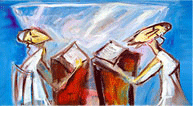Recent Posts
- The Reflective Light of Kabbalah (Jewish Mysticism)
- Beginning Kabbalah in the Comfort and Privacy of Your Own Soul
- Kabbalah Beliefs Already Undergird Your Belief System
- The Only Kabbalah Is God’s Kabbalah
- Kabbalah Practice and Discipline
- Kabbalah Books and Primary Source Texts
- Kabbalah Symbols: 72 Names
- Kabbalah Meditation and Study
- Kabbalah, Reiki, and Energy
- The Mystical Nature of Spiritual Energy
- Kabbalah Astrology, Chronology, and Linguistics
- Two Meanings of Lucky Eye and Evil Eye
- The Future in Prophetic Kabbalah
- Teaching Kabbalah for Everyone
- The “Kabbalah Centre” Brand
- Kabbalah Jewelry Represents Availability
- The Covenant Behind a Kabbalah Ring
- A Case Study on Kabbalah Red String
- The Spiritual Energy of the Jewish Hamsa
- The History of Kabbalah Tattoos
- Privacy Policy
- Contact Us
Kabbalah Symbols: 72 Names
The purpose of kabbalah symbols is to centralize concepts into an echad (a unity-diversity matrix) so that all levels of interpretation can be considered and correlated simultaneously. In this regard we mention the long shem hamforash (the 72 names of God), the kabbalah tree of life, and the Jewish hamsa as having key significance.
The 72 three-letter names are not “names of God” in the traditional sense but names of his intelligences or principles of creation, and are derived by gematria upon Shmoth 14:19-21. There is diversity of opinion over whether they should be vowel-pointed as in the original text, as in the alefbeth itself, or with other pointing. As kabbalah symbols, the first place of the 72 names is to symbolize the diversity of the cosmos (represented by 70 and 72), as analyzed into 72 principles. It is asked, is the assignment of these principles just as arbitrary as the 64 ideographs of the I Ching? Neither the I Ching, with its very basic permutation on a power of two, nor the shem hamforash, with more complex permutations each defined by the three letter symbolisms it incorporates, are arbitrary: the permutations are defined by cosmic processes (the general revelation of math, or the special revelation of Torah).
Other symbolisms of the 72 names (where 70, 71, and 73 are treated as functionally equivalent) are: the entire Torah itself, delivered in 70 tongues, and later translated by 72 scholars; Israel, led by 71 members of Sanhedrin; all humanity, grouped into 71 nations (goyim and Israel); the yearly cycle of 12 zodiac signs with six five-degree segments each; and the Psalter, with 72 psalms grouped for David (see Psalm 72:20), 73 psalms for others, and 5 concluding hallels. In Judaism, 70 means Gentiles and 71 means Jews; in Islam, 71 means Jews, 72 Christians, and 73 Muslims. Practicing these correspondences and correlations among the kabbalah symbols yields fruitful enlightenment.
Kabbalah Symbols: 32 Paths
The kabbalah tree of life is, at minimum, a mathematical network of 10 nodes and 22 segments illustrating the formation (“yetzirah”) of the cosmos. From top to bottom and right to left, the 10 sefiroth are identified as kether, chokhmah, binah, chesed, gevurah, tifereth, nezhach, hodh, yesodh, malkhuth (crown, wisdom, understanding, mercy, justice, beauty, victory, majesty, foundation, kingdom).
Each sefirah is connected to between 1 and 8 others via the 22 segments, which are assigned to the 22 letters. The 3 mothers are horizontal segments (alef representing air is central, mem representing water below, shin representing fire above); the 7 doubles are vertical (beth right, gimel left, daleth central in the upper set; kaf right, pe left, resh and taw central in the lower set); the 12 singles are diagonal (interspersed throughout the network in pairs).
Letters and words themselves are also traditional kabbalah symbols. Alef is the shape of an ox and represents a master-slave relationship; beth is the shape of a house and represents a covenant relationship. The word containing these first two letters, “av” (father), is thus the first of the 231 two-letter permutations, and fatherhood is seen to harmonize both relationships. Among other meanings, the kabbalah tree of life represents Torah (also called a tree of life) because Torah is founded upon the 22 letters and the “Ten Words” (the ten commandments).
Kabbalah Symbols: 5 Branches
The Jewish hamsa is the kabbalah symbol of an extended hand and literally means “fivefold” (from “chamesh”, five); it is usually drawn artificially stylized so that thumb and pinky are identical lengths and the hand is symmetrical rather than left or right. This too is founded on the five books of Torah.
Its first meaning is the extending of one’s hand toward another, in a gesture of peace, blessing, and fellowship. From this meaning is derived (by drash) its symbolism for communal prayer, one for another, and particularly the two prayers of initiation and restoration. From these meanings are derived its use as a symbol of welcome (initiation) and of healing (restoration), including physical healing. Accordingly, those who display the Jewish hamsa are responsible to pray continually for those who may view it.
